The Ferrari F2001 bodyshell
To be honest, there is not much to say about it: as mentioned previously, its overall condition is more than correct. Except a serious hit that left two visible marks:
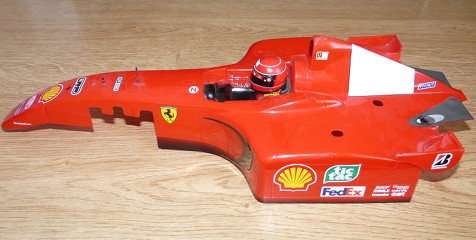
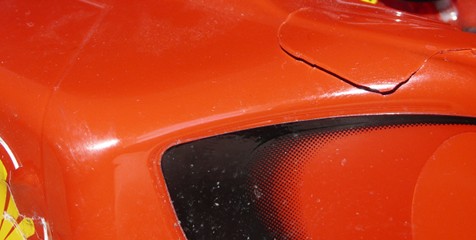
Repairing it was mostly done by applying reinforcement tape from the inside of the body, both to hide the crack and to save it from getting worse. Next, I removed the LRP and "On-Off" stickers that had nothing to do on the bodyshell before cleaning it with soaped water to make the bodyshell shinier. In the process, take great care of the stickers by cleaning them gently.
Last, you can see the previous owner wanted a realistic bodyshell since he placed two radio antennas at the front end, just like Michael Schumacher's real car during the 2001 season.
First run with my Ferrari F2001
After spending so many hours mainly focusing on the chassis, I must confess I was quite impatient to test this "heretic!" (my Facebook page fans will understand). So, I went to the track by a very sunny and very hot day:
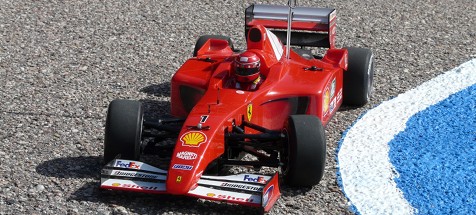
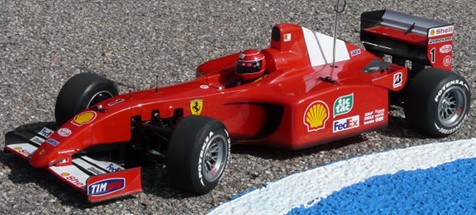
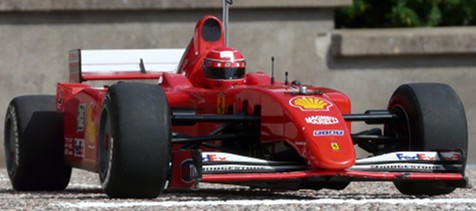
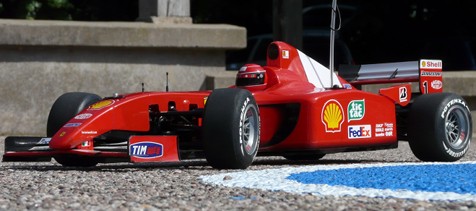
Once at the track, the car is even more beautiful. However, I didn't notice the way too high ground clearance at the rear before shooting the photos: this had been adjusted it for the second run (well no, it is not a good idea to do this kind of surgery by the side of a track).
As you may see further, I kept the slick tires: the video shot by my friend David from RC 4 Old Nuts proves their grip is still fairly good. Afterwards, I made a few laps using the new Type A ribbed tires, but I couldn't really feel any big difference (Type B would have been much better for this very hot track temperature though).
Ok, let's go for action:
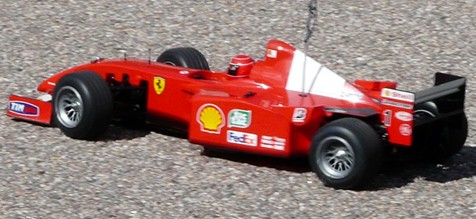
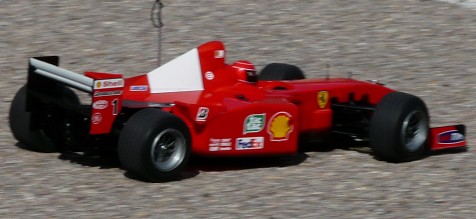
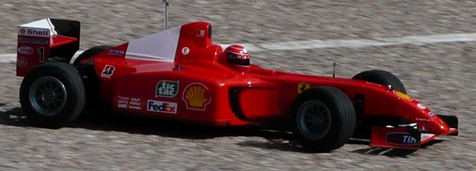
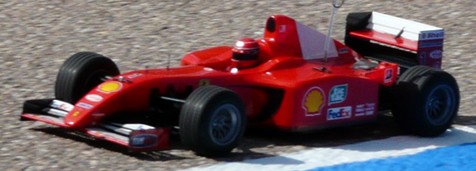
Describing the F201 chassis handling is pretty difficult because it is quite different from any other of my models. Its weight makes is less quick than a classic F1 like my F103, but more lively than a Touring chassis like my TA-04 TRF or TB-03. When entering and exiting corners, the F201 handling is almost the opposite of the F103's: with a classic F1, braking is delicate and entering speed determines how the chassis will exit the corner. Either on a rail or spinning if the driver was too enthusiast.
But once the rear drivetrain ground clearance was correctly set and the front stabilizer plate was removed (remember the video below was filmed before these corrections), the F201 handling becomes... perfect. More than perfect.
Logically, you can brake much later et enter faster in the corner because of the 4WD transmission. But when exiting, the F201 becomes really amazing: when you significantly pull the trigger, the chassis immediately goes straight, sometimes brutally. The first time it happens, you get confused since you're expecting the usual 4WD understeer handling. Not with the F201: as soon as you generously push the throttle, the chassis immediately stops wandering and it goes straight like a bullet. Even if the chassis suffered from setup errors on the video (this was the first run), you can notice sometimes the chassis is wandering when exiting a corner and it suddenly goes straight once throttle is firmly applied. After correcting the chassis setup for the second run, this handling characteristic got even more obvious: despite my best efforts and on-purpose bad driving, pulling the trigger to the max always made the car immediately go remarkably stable and straight. This very unique handling among any of my models makes the driver feel very comfortable and it is amazing to see.
But the fun is somewhere else: visually, the chassis has a very realistic handling, much more than the classic RC F1s. The F201 chassis looks like it has a true chassis life with suspension effects while I never saw this when driving my other F1 chassis:
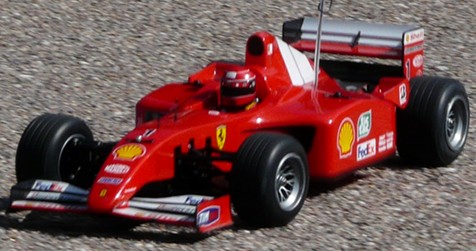
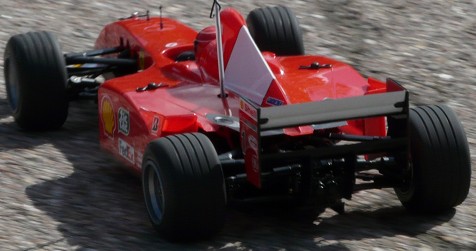
In the end, assembling this chassis is a great amazing moment that lasts for hours. You never feel like repeating always the same steps, especially when you pay attention to how the parts you are building work. Somehow, I now consider the F201 chassis to revive the cheerful era of Tamiya first "models in motion". The only difference being that the late 70's early 80's chassis were basic with scale-realistic bodyshells whereas it is the opposite with the F201 (even if the Ferrari F2001 is realistic too). Anyway, both are amazing experiences you shouldn't miss if you have the opportunity.
On the track, the F201 chassis is not a speed demon, despite the red bodyshell and the Sport Tuned motor. However, driving it is amazing, both because of its scale-realistic handling and its very unique driving handling: very few of my models make me feel like that, but at moments, I was so pleased watching the Ferrari F2001 running that sometimes I was no longer focused enough on driving as I should have been.
More photos and a video (thanks David):
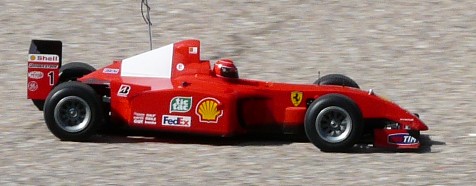
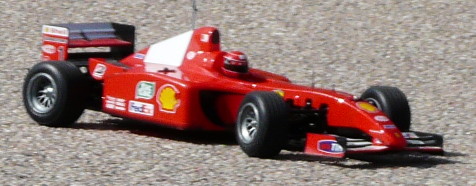
Related articles:
- 58003 Tyrrell P34 Six Wheeler
- 58011 Ferrari 312T3
- 58014 Martini Mk.22 Renault
- 58053 Road Wizard F1
- 58069 Williams FW11B Honda F1
- 58084 Ferrari F189 Late Version - F101
- 58114 Footwork FA13 Mugen Honda - F102
- 58179 Williams Renault FW18 - F103RS




